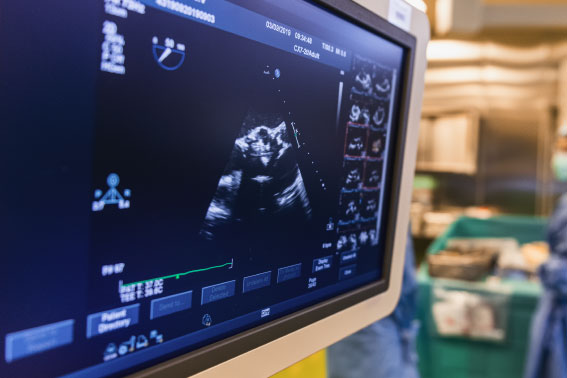Bamidbar 5780
“And Hashem spoke to Moshe saying, “Behold! I have taken the Levi’im from among the Children of Israel, in place of every firstborn, the first issue of every womb among the Children of Israel, and the Levi’im shall be mine. For every firstborn is Mine: On the day I struck down every firstborn in the land of Egypt I sanctified every firstborn in Israel for Myself, from man to beast; they shall be Mine – I am Hashem.”
The Mitzva of Pidyon haBen applies to the first male child that emerges from the womb (the “Peter Rechem”). All subsequent children are exempt from the Mitzva and in fact, even if the first child proved to be a Nefel (a child that dies within thirty days of birth), it is still, in many cases, considered to be the Peter Rechem. The Mishna in Bechoros (46a) explains:
A person may be a Bechor (firstborn) with regard to inheritance [he receives a double portion of the estate of his father] but not a Bechor with regard to the Kohen [he doesn’t require a Pidyon haBen]…
…Who is a Bechor with regard to inheritance but not with regard to Pidyon haBen? A child born after a Nefel… Or [a child born after] a baby born at term but which was dead when its head emerged. [The stillborn is still considered the Peter Rechem].
If a woman miscarries something that resembles an animal, wild animal, or bird [it is still considered the Peter Rechem] – these are the words of R’ Meir. But the Chachamim say, only if it had the form of a person. If she miscarries a “Sandal” (a piece of flesh that has no form of a fetus – it has no face), or a “Shilya” (a placenta) [we assume that there cannot be a placenta without a fetus, thus the fetus must have dissolved within the amniotic sac] or a “Shfir Merukam” (a membranous sac with the form of a fetus), or a fetus that emerged in pieces [as during birth it was cut it into pieces in order to deliver it] – a child that is born subsequent to the miscarriage of any of these, is a Bechor with regard to inheritance but not a Bechor with regard to Pidyon haBen.
According to the Chachamim, a baby can only be considered a Peter Rechem if it had the form of a person. The Gemara in Nidah (23b) explains that this means that its face (or a part thereof) resembles a human face even if the rest of the body more closely resembles that of an animal. The Rambam (Hilchos Issurei Biah 10:9) elaborates:
What constitutes the form of a human face? Its forehead, eyebrows, eyes, cheeks, and chin have a human form. But with regard to its mouth, ears, and nose – even if they resemble those of an animal or wild animal, it is still considered a human fetus.
If the fetus did have the form of a human being but it dissolved (as is the case with a woman who miscarried a Sandal, Shilya, or Shfir Merukam) the Chachamim agree that it is considered a Peter Rechem. But if its limbs had not formed (as is the case with a woman who miscarries a Shfir Malei Mayim – a membranous sac full of water), it is not considered a Peter Rechem (ibid. 47b).
These Halachos are codified by the Shulchan Aruch (Y.D. 305:22-23):
Likewise, if she miscarries something that resembles a form of animal, wild animal or bird, but half of its face resembles that of a person, or a Sandal, Shilya, or Shfir Merukam… a child born after any of these is not considered a Peter Rechem. A baby born after eight months of pregnancy[1] which died [in the womb] and its head emerged, or if a woman miscarries a sac full of blood or water, or of colored fluids, or if she miscarries something that resembles a form of fish, locust, insect, or bug, or if she miscarries on the fortieth day since conception – a child born after any of these is not a Bechor with regards to Pidyon haBen.
The Rema adds:
And in any case where a fetus’s limbs are not yet formed, it does not exempt the child that follows it from Pidyon haBen. Even today we rely on this.
The Halachos of Pidyon haBen are similar to those of Tumas Leidah (the impurity contracted by a woman who gives birth). If a fetus develops to the extent that its mother would contract Tumas Leidah upon its birth, it will also be considered a Peter Rechem.
In the following paragraphs we will examine a fascinating discussion among the Poskim regarding the stage of pregnancy at which the limbs of a fetus are considered to have taken shape (“Rikum Eivarim”). There is clearly a gestational age before which the limbs have definitely not developed, and a later age at which we can assume that the fetus has begun to form limbs.
Before forty days of the pregnancy have passed, an embryo is considered to be “Maya b’Alma” (“mere water”) by the Gemara (Yevamos 69b); in other words, it does not have the form of a fetus. At this stage, its limbs can certainly be assumed to not have taken shape (Nishmas Avraham, Y.D. 305:4 citing Rav Shlomo Zalman Auerbach zt”l).
Additionally, the Gemara in Nidah (8b) rules that after three months of pregnancy a fetus is noticeable – “Hukar Ubra” and the mother can be assumed to no longer be menstruating (an important assertion for several Halachos of Nidah). According to the majority of the Poskim, this is also the point of Rikum Eivarim. Therefore, if a woman miscarries after this point, the fetus is considered a Peter Rechem (see the Shulchan Aruch, Y.D. 189:33 and the Poskim ad. loc.)
The Sefer “Otzar Pidyon haBen” (Chapter 1, footnote 19) cites Rav Shlomo Zalman Auerbach zt”l who also agreed that Rikum Eivarim can assumed to have taken place by three months of pregnancy.[2] However, the author adds a word of caution:
Occasionally, even at this stage, due to the frailty of a fetus or a delay in its development, it doesn’t develop during these months as expected. It is also possible that it hasn’t reached the expected size growth parameters for gestational age and that not even one of its limbs have formed. Modern imaging techniques can reveal developmental delays of several months.
He then cites several Poskim who discuss cases where Rikum Eivarim might not have taken place after three, or even four, months of pregnancy. R’ Shlomo Zalman and Rav Shmuel Wosner zt”l ruled that in any case of doubt one should perform a Pidyon haBen m’Safeik on the child born after the miscarriage. However, one should obviously not rule on these matters oneself, and even when a miscarriage takes place during the early stages of pregnancy a Rav should be consulted.
What about a miscarriage that takes place between forty days and three months of pregnancy? Can Rikum Eivarim be assumed to have taken place during this period or not? The Mishna we cited implies that it depends on how the Nefel appears to the naked eye; if upon careful examination one can detect Rikum Eivarim then it is a Peter Rechem. But who is qualified to make this determination? This question is a matter of dispute among the Poskim. The Beis Yosef (Y.D. 305) cites the Maharik (Shoresh 143):
Regarding your question concerning the woman who gave birth to a boy having previously experienced a miscarriage within eight weeks of intercourse. You asked the women who were present [at the miscarriage] and they testified how the Shfir fell into the pit and was then placed into a pail filled with water. They could not detect any Rikum Eivarim, just what appeared to be thin sinews, similar to flesh. Others said that it was full of water or mucus. It is clear, as you write, that based on the testimony of the women, there isn’t a need to be concerned of the possibility of a fetus, as Rabbenu Moshe and the other Poskim write.
According to the Maharik, the women who were present could be relied upon to determine whether there was Rikum Eivarim. The aforementioned Rema also concurs that we are capable of determining Rikum Eivarim even today.
The Maharik also notes that regarding Tumas Leidah (which is also dependent upon Rikum Eivarim as we explained above) the Tur in Hilchos Nidah (Y.D. 194) asserts that we are no longer familiar with the various forms that a fetus assumes during the different stages of pregnancy and we must therefore always be stringent. However, the Maharik maintains that that is only true of Hilchos Nidah, a violation of which is punishable by Kareis but for the purposes of Pidyon haBen one may consider the mother to have a Chazaka[3] that her womb has not yet issued a Peter Rechem (“Chazaka Shelo Niftar Rachma”) and the fetus to have a Chazaka that it does not yet have Rikum Eivarim and one needn’t act stringently in all cases.
It could be argued that according to the Maharik, a woman would have a Chazaka Shelo Niftar Rachma even after three months of pregnancy. However, the Noda b’Yehuda (Tinyana 188, in a Teshuva to his son) argues that if a woman is ascertained to be pregnant, she does not have this Chazaka as the fetus she carries is destined to be a Peter Rechem. The Chazaka Shelo Niftar Rachma can only be applied if the woman had not been known to be pregnant before the miscarriage. Then she would have a Chazaka like any other woman who isn’t pregnant. However, following three months of pregnancy when her pregnancy shows and she feels the movements of the fetus, she has no Chazaka.
The Noda b’Yehuda uses this concept to answer an objection of the Chacham Tzvi (104) to the ruling of the Maharik. The Maharik contends that a woman has a Chazaka of not having issued a Peter Rechem. However, the Gemara in Nidah (29a) attests that “the majority of pregnant women give birth to a viable child”. This rule is a “Rov” – an assumption based on a majority, and appears to be in direct conflict with the Chazaka of the Maharik. Since a Rov is Halachically stronger than a Chazaka (“Ruba v’Chazaka, Ruba Adif”), the Maharik’s Chazaka should surely be disregarded!
The Noda b’Yehuda argues that there is a difference between a woman who knows she is pregnant and one whose only indication of a pregnancy was a miscarriage[4]. If she is known to be pregnant, the Rov informs us that she is likely to give birth to a healthy child. If our only indication of pregnancy was the miscarriage, the Rov does not apply and, according to the Maharik, she has a Chazaka Shelo Niftar Rachma.
[The Avnei Nezer (Y.D. 398) argues that the Chacham Tzvi certainly considered this possibility as well but held that the cases are no different. Even in the case of a miscarriage, the woman has been retroactively shown to have been pregnant. Though she miscarried and the fetus did not have Rikum Eivarim, the Rov that most women give birth to healthy children would still have applied to her before the miscarriage as irrespective of the stage of a fetus’s development it is certainly destined to be born.]Although the Maharik rules that women who are present at a miscarriage can be relied upon to look for Rikum Eivarim, the Acharonim (see the Pischei Teshuva ibid. 29) infer that even if they do not know how to do so, or even if they didn’t examine it at all, it can be assumed not to have been a Peter Rechem due to the Chazaka Shelo Niftar Rachma. In the case referred to the Maharik, the women examined the fetus after it had been placed in a pitcher of water where it would not have been possible to make an accurate assessment as evident from the Gemara in Nidah (25a). We must say that their assessment was not needed in order to dismiss it as a Peter Rechem, and if she subsequently gives birth to a son it will be a Bechor because the Chazaka Shelo Niftar Rachma informs us that the abortus was not a Peter Rechem.
The Chacham Tzvi makes another objection to the ruling of the Maharik. He strongly maintains that today we are not familiar with the signs of Rikum Eivarim and are simply unable to check for them. Therefore, in these cases there is an unresolvable doubt as to whether a miscarriage was a Peter Rechem or not. The obligation to pay five silver Selaim coins to a Kohen for Pidyon haBen is a monetary obligation where the rule is “haMotzi meiChavero Alav haRaya” – “the burden of proof is upon the person who seeks to make a claim from his fellow” (Bava Kama 46b). Here, where Rikum Eivarim is in doubt, the father is under no obligation to pay the five Selaim until the Kohen proves that the subsequent child that is born is a Bechor. Since the Kohen is unable to do (as we are not familiar with the signs of Rikum Eivarim), there will be no obligation for the father to perform a Pidyon haBen.
Furthermore, the Maharik’s very basis for obligating the father to perform a Pidyon haBen in these circumstances is a Chazaka. Given that a Chazaka can never be used to extract money from another party, how is it possible to obligate a father to perform a Pidyon haBen on this basis (Maharit Algazi, Bechoros 8:60)?
The Avnei Nezer (ibid.) poses yet another question on the ruling of the Maharik. According to the Maharik, the first embryo has a Chazaka of not being a Peter Rechem. However, the child that is subsequently born surely has a similar Chazaka of not having the status of a Bechor (which would obligate it in Pidyon haBen). Tosfos (Bechoros 20b) maintain that an animal Bechor only assumes its status as Bechor upon its birth and not during gestation. If the same is true of a human Bechor, then at the moment of birth it actually has a Chazaka of not being a Bechor. On the contrary, one would need to prove that the birth rendered it a Bechor. Since there is no way to prove this, the father cannot possibly be obligated in Pidyon haBen.
The majority of Poskim hold that one must take the Maharik’s position into account and a Pidyon haBen should be performed for a child born subsequent to a miscarriage that took place between forty days and three months of pregnancy. However, in deference to the Chacham Tzvi, no Bracha should be recited[5].
Today, we have sophisticated imaging tools at our disposal which can precisely determine the state of fetal development at any point during a pregnancy. If a high-resolution ultrasound confirms that a fetus has developmental delays profoundly delayed development, and that despite the pregnancy reaching its fourth month, the fetus’s limbs have not taken any form, would we be able to definitively say that it was definitely not a Peter Rechem in the event of a miscarriage,? Would the Chacham Tzvi agree that these tools give us the ability to identify Rikum Eivarim?
The Sefer Otzar Pidyon haBen (ibid.) cites Rav Shlomo Zalman Auerbach zt”l who agreed that ultrasound can be used to determine the presence of Rikum Eivarim before a miscarriage. However, he did not believe that modern techniques or pathological examinations after a miscarriage could be relied upon to discern Rikum Eivarim
Although it is not entirely clear why Rav Shlomo Zalman zt”l rejected post-mortem examinations, it is likely that he felt this way because the Chacham Tzvi was insistent that we are no longer able to examine a fetus for Rikum Eivarim. Following a miscarriage, when the fetal appearance has potentially been distorted or altered during its “birth”, it would be impossible to verify if there had been Rikum Eivarim, even with modern technology. However, before the miscarriage, when ultrasound can produce highly detailed images of the fetus, perhaps even the Chacham Tzvi would agree that it is possible to examine the fetus for Rikum Eivarim.
As an aside, ultrasound technology has raised a difficulty with Chazal’s assertion that an embryo is considered “Maya b’Alma” when it is fewer than forty days old. Chazal imply that at this stage the embryo has no human form at all yet ultrasound images clearly show the embryo beginning to take a form even at this early stage!
The Nishmas Avraham (C.M. 425:4, pp. 147-148) answers that although the embryo does have a form at this stage, it resembles other creatures, not a human being, as the limbs and facial features are just beginning to develop. Others say that since the embryo has not yet developed any bones, it cannot yet have the status of “Adam” as the Gemara (Nidah 21b) rules that a woman who miscarries a piece of flesh only contracts Tumas Leidah if the flesh contained a bone (see the Noda b’Yehuda ibid.).
[1] In the times of the Gemara, a child born during the eighth month of pregnancy would not survive.
[2] R’ Shlomo Zalman zt”l added that at this stage her pregnancy is noticeable to others and that she commonly feels the movements of the fetus.
[3] In other words a “Chazaka d’mei’Ikara – an assumption made in Halacha that a state is presumed to have continued until it has definitely changed.
[4] I.e. we only became aware of the pregnancy after it ended.
[5] This is an interesting compromise. The question of whether or not to recite a Bracha depends upon whether there is a Mitzva to perform or not, and not whether the father has a monetary obligation to the Kohen. Since the main objection of the Chacham Tzvi is that the Kohen cannot prove that the father is obligated to pay him the five Selaim, one might have argued that as far as the Mitzva is concerned one should assume the Maharik’s position and recite a Bracha. Perhaps the Poskim were concerned about the first objection of the Chacham Tzvi – that of Ruba v’Chazaka, Ruba Adif. This objection challenges the entire premise of the Maharik in obligating the father to perform the Pidyon haBen and not just the technical issue of haMotzi meiChaveiro Alav ha’Raya.















Add comment